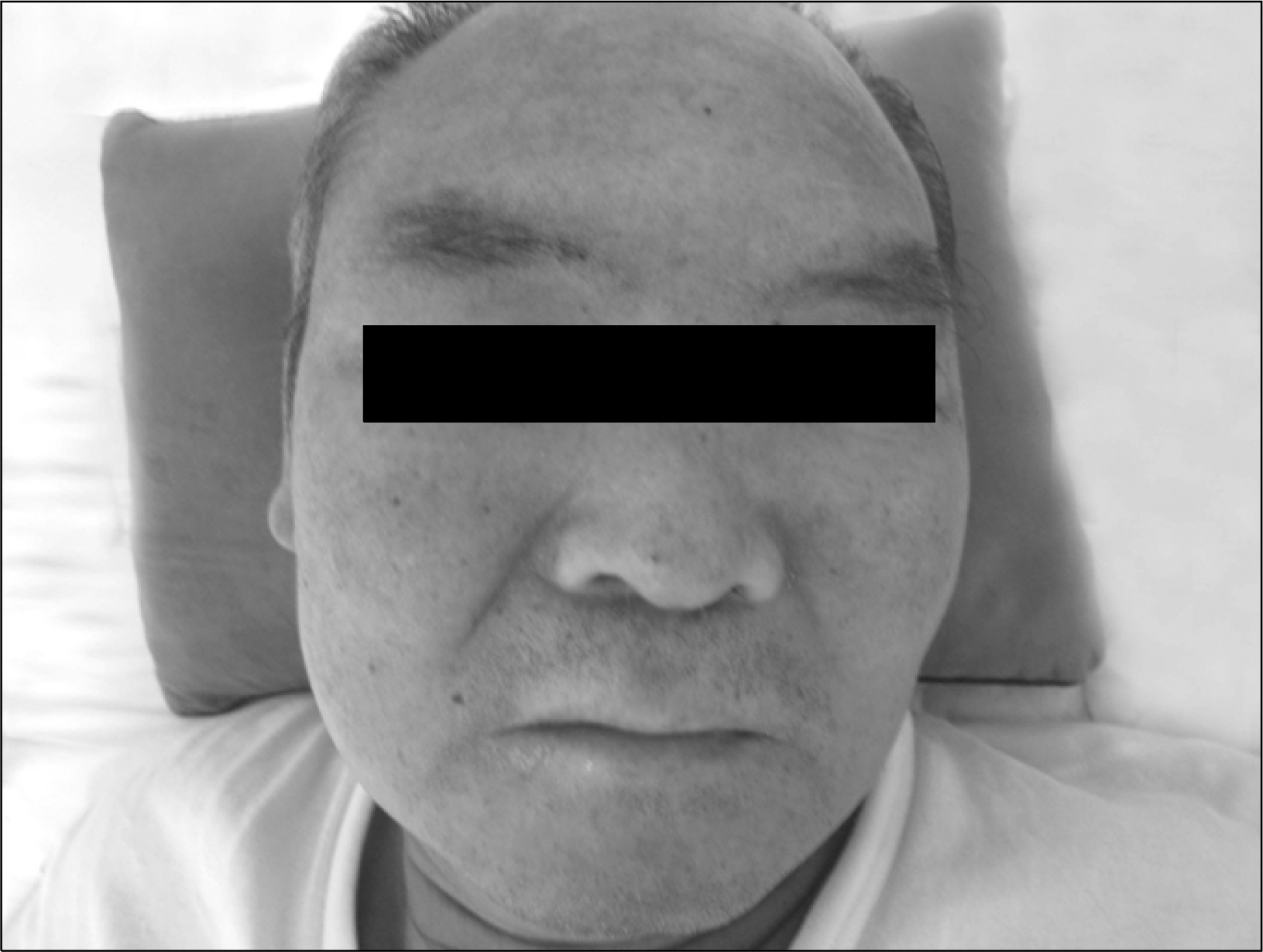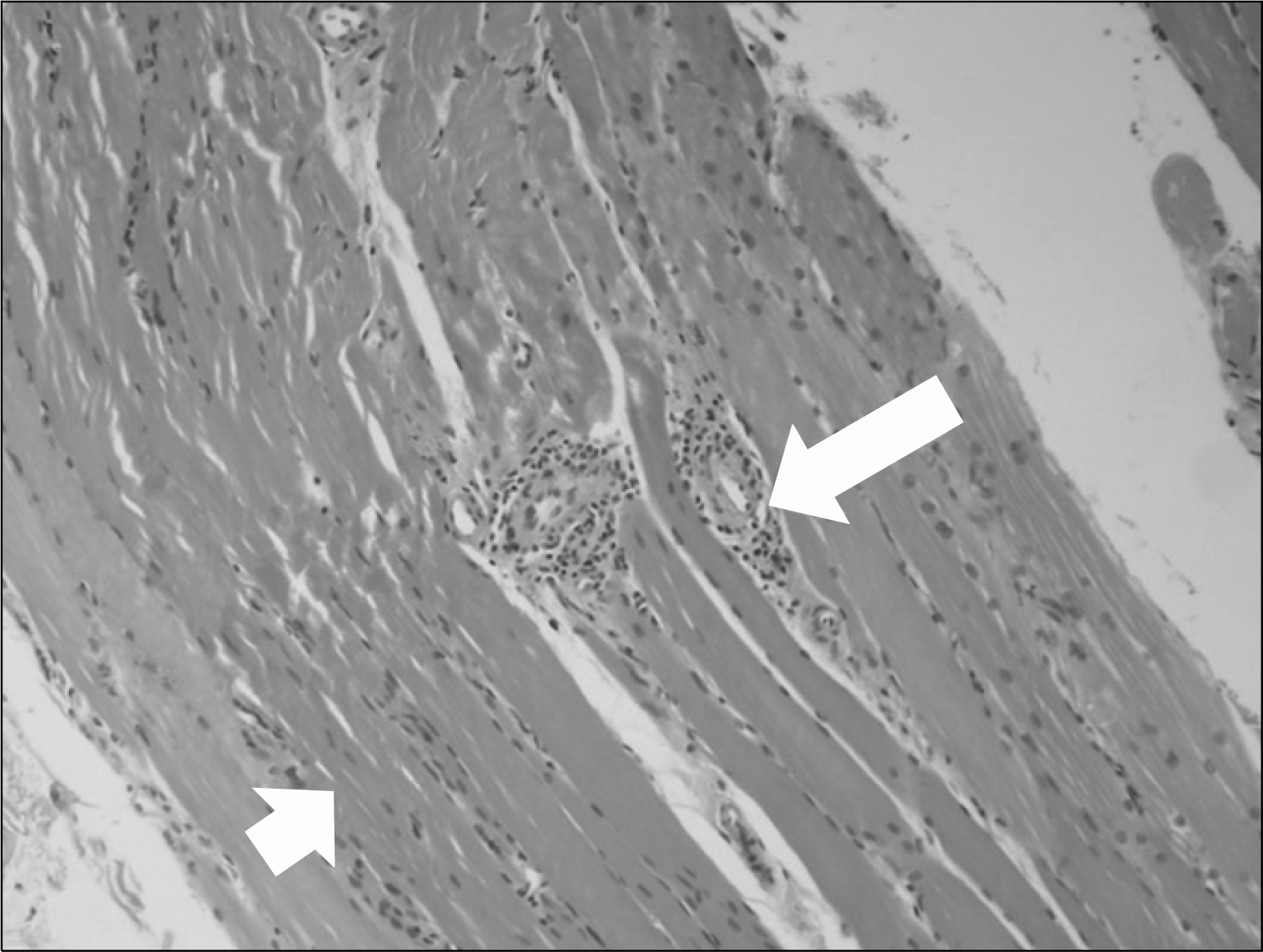Abstract
Dermatomyositis is a distinctive entity that is identified by a characteristic rash that accompanies or more often precedes proximal muscle weakness. There is a well recognized association between dermatomyositis and several cancers, such as ovarian cancer, lung cancer, pancreas cancer, stomach cancer and colorectal cancers and non-Hodgkin Lymphoma. But dermatomyositis associated with intrahepatic cholangiocarcinoma has not yet been reported in Korea. We experienced a case of dermatomyositis associated with infiltrative intrahepatic cholangiocarcinoma and we report on this unusual case along with reviewing the related literature.
Go to : 
REFERENCES
2). Stertz O. Polymyositis. Berl Klin Wochenschr. 1916. 53:4893.
3). Hill CL., Zhang Y., Sigurgeirsson B., Pukkala E., Mellemkjaer L., Airio A, et al. Frequency of specific cancer types in dermatomyositis and polymyositis: a population-based study. Lancet. 2001. 357:85.

4). Lee SW., Jung SY., Park MC., Park YB., Lee SK. Malignanacies in Korean patients with inflammatory myopathy. Younsei Med J. 2006. 47:519–23.
6). Horie Y., Yamada M., Nakai K., Kawasaki H., Hirayama C., Matsui K, et al. Combined hepatoceullarchoangio-carcinoma associated with dermatomyositis. J Gastroenterol Hepatol. 1989. 4:101–4.
7). Hengstman GJ., van Engelen BG. Polymyositis. invasion of non-necrotic muscle fibres, and the art of repetition. BMJ. 2004. 329:1464–7.

8). Sigurgeirsson B., Lindelof B., Edhag O., Allander E. Risk of cancer in patients with dermatomyositis or polymyositis. A population-based study. N Engl J Med. 1992. 326:363–7.
9). Barnes BE., Mawr B. Dermatomyositis and malignancy. A review of the literature. Ann Intern Med. 1976. 84:68–76.
10). Arnett FC., Hirsch TJ., Bias WB., Nishikai M., Reichlin M. The Jo-1 antibody system in myositis: relationships to clinical features and HLA. J Rheumatol. 1981. 8:925–30.
11). Levine SM. Cancer and myositis: new insights into an old association. Curr Opin Rheumatol. 2006. 18:620–4.

12). Kim HY., Kwok SK., Kim WU. A case of dermatmyositis associated with prostate cancer. J Korean Rheum Assoc. 2009. 16:59–63.
13). Bonnetblanc JM., Bernard P., Fayol J. Dermatomyositis and malignancy. A multicenter. cooperative study. Dermatologica. 1990. 180:212–6.
14). Iorizzo LJ 3rd., Jorizzo JL. The treatment and prognosis of dermatomyositis: an updated review. J Am Acad Dermatol. 2008. 59:99–112.

15). Sigurgeirsson B., Lindelof B., Edhag O., Allander E. Risk of cancer in patients with dermatomyositis or polymyositis. A populationbased study. N Engl J Med. 1992. 326:363–7.
Go to : 
 | Fig. 1.The patients shows violaceous erythema on the forehead and the bilateral cheeks involving the nasolabial fold. |
 | Fig. 2.The histology of the skeletal muscle from the gluteus medius muscle shows perivascular lymphocyte infiltration and inflammatory cell infiltrates into the perimuscular area (long arrow), and perifascicular atrophy (short arrow). These findings are suggestive of inflammatory myopathy (H&E stain, ×200) |




 PDF
PDF ePub
ePub Citation
Citation Print
Print



 XML Download
XML Download